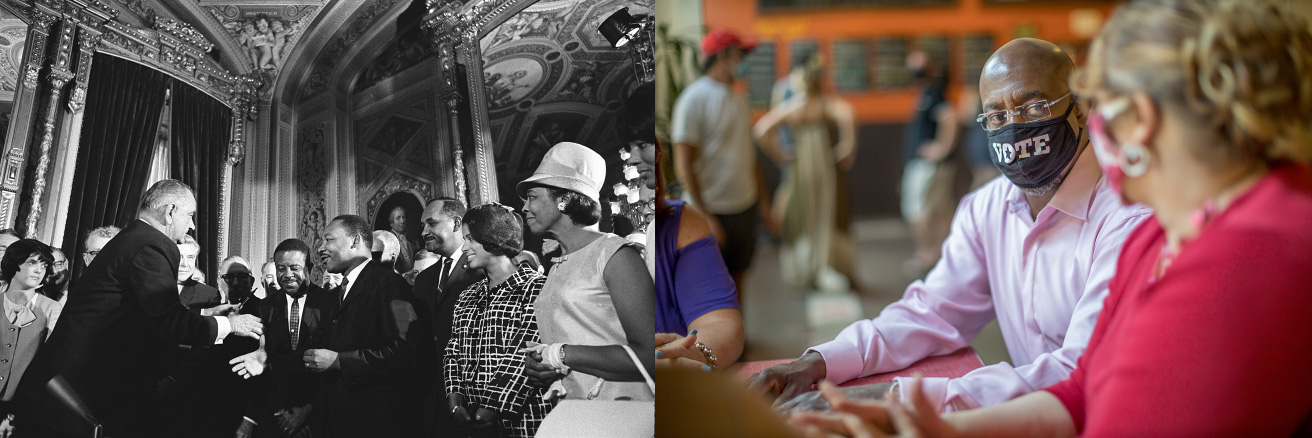Chapter 5: Civil Rights
Introduction to Civil Rights

The U.S Constitution and its founding principles of liberty, equality, and justice are admired and emulated the world over. However, not everyone living in the U.S. has enjoyed the same treatment and freedoms the law promises. When we consider the experiences of women, immigrants, people of color, LGBTQ people, people with disabilities, and other groups, a majority of Americans have been deprived of basic rights and opportunities, and sometimes of citizenship itself. This idea of America is, indeed, a work in progress.
The struggle for civil rights is a story of courageous individuals and social movements awakening fellow Americans, compelling lawmakers, and inspiring the courts to make good on these founding promises. While many changes must still be made, the past one hundred years have seen remarkable progress. Yet, as the rash of thinly-veiled voter suppression bills making their way through state legislatures demonstrate, (Figure 5.1), members of these groups still encounter prejudice, discrimination, and even exclusion from civic life.
What is the difference between civil liberties and civil rights? How did the African American struggle for civil rights evolve? What challenges did women overcome in securing the right to vote, and what obstacles do they and other U.S. groups still face? This chapter addresses these and other questions in exploring the essential concepts of civil rights.

